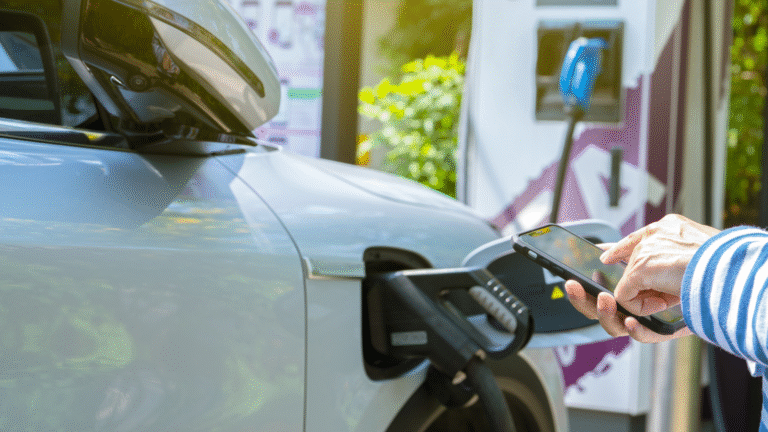As EV adoption grows, charging subscription plans have become common: monthly fees for discounted kWh, access to a network, or perks like reduced idle fees. But are these subscriptions worth it for typical drivers? The right answer depends on your charging habits, travel patterns and local network coverage. This article helps you weigh the costs and benefits so you can decide whether a subscription makes sense.
Table of Contents
- What charging subscriptions typically offer
- Who benefits most from subscriptions
- When subscriptions are usually not worth it
- How to calculate value: a simple framework
- Common subscription pitfalls and fine print to watch
- Alternatives to subscriptions
- FAQs
- Conclusion
1. What charging subscriptions typically offer
Charging subscriptions vary, but common features include:
- Lower kWh rates at participating chargers
- Reduced or waived session or connection fees
- Preferential pricing on fast chargers or off-peak windows
- Monthly or annual membership fees
- Roaming across partner networks and billing consolidation
- Priority queues, reservation options or idle/parking credits
Some subscriptions are network-specific; others bundle multiple networks or include home-energy credits.
2. Who benefits most from subscriptions
a) Frequent long-distance drivers and commuters using public fast chargers
If you regularly use DC fast chargers on corridors, a subscription that reduces kWh or session fees can pay for itself quickly.
b) Rideshare, taxi and delivery drivers
High utilisation means discounts per kWh and reduced session fees translate into meaningful monthly savings.
c) Drivers in areas with a single dominant network
If one operator covers your common routes, their subscription may be valuable for predictable pricing and billing simplicity.
d) Fleet managers with predictable public-charging patterns
Centralised billing and member discounts simplify fleet cost accounting and can yield savings.
3. When subscriptions are usually not worth it
a) Mostly home-chargers with infrequent public charging
If >80% of charging happens at home, a subscription rarely pays off.
b) Low annual distance drivers
Occasional weekend users don’t reach the kWh threshold where subscriptions become cost-effective.
c) Areas with many competing networks and cheap pay-per-use pricing
If network competition yields low per-kWh prices, subscriptions may offer marginal benefit.
4. How to calculate value: a simple framework
- Estimate your annual public kWh use (kWh/year).
- Compare pay-as-you-go costs vs subscription discounted kWh and any per-session savings.
- Factor in the subscription fee (monthly × 12).
- Calculate break-even kWh where subscription cost equals savings.
Example: If a subscription costs $15/month ($180/yr) and saves $0.20/kWh vs parity pricing, you need 900 kWh/year of public charging to break even (180 / 0.20 = 900 kWh). If you only public-charge 300 kWh yearly, it’s not worth it.
Also include session fees, idle penalties and any welcome credits in your math.
5. Common subscription pitfalls and fine print to watch
- Network coverage mismatch: A subscription is worthless if its network doesn’t cover your routes.
- Dynamic pricing: Discounts may apply only at certain times or chargers — read the tiers.
- Lock-in periods and cancellation fees: Late or inflexible cancellation can cost you.
- Idle/penalty charges: Savings can be offset by high idle fees if chargers are busy.
- Complex roaming fees: Roaming onto partner networks can have hidden surcharges.
- Uncertain future pricing: Operators may change prices; check review clauses.
6. Alternatives to subscriptions
- Pay-as-you-go with multiple apps/RFID cards: Good if public charging is occasional and variable.
- Top-up credits: Some networks sell discount bundles without ongoing subscriptions.
- Home-first approach: Install a wallbox and pair with a cheap off-peak tariff or solar.
- Fleet charging accounts: For businesses, negotiated rates and consolidated billing often beat retail subscriptions.
FAQs
Q: Do subscriptions allow reservations?
A: Some premium plans offer reservations or priority lanes at busy hubs, but not all networks have this feature.
Q: Can I share a subscription with household members?
A: Some providers allow multiple vehicles on one account; check terms for limits and added fees.
Q: Do subscriptions include home charging?
A: Rarely. Most subscriptions focus on public charging; home energy deals are separate.
Conclusion
Charging subscriptions can be a great deal — for frequent public chargers, fleet users and rideshare drivers — but they’re not universally beneficial. Run the numbers against your typical public kWh usage, consider network coverage, watch for hidden fees and compare alternatives like pay-as-you-go bundles or home charging investments. If you travel heavily and use the same network often, a subscription is likely worth it. If you mainly charge at home, skip it and save the monthly fee.
Meta Description: Charging subscriptions promise lower kWh and perks — but are they worth it? This guide helps Australian drivers and fleets calculate when subscriptions offer real savings and when to skip them.
